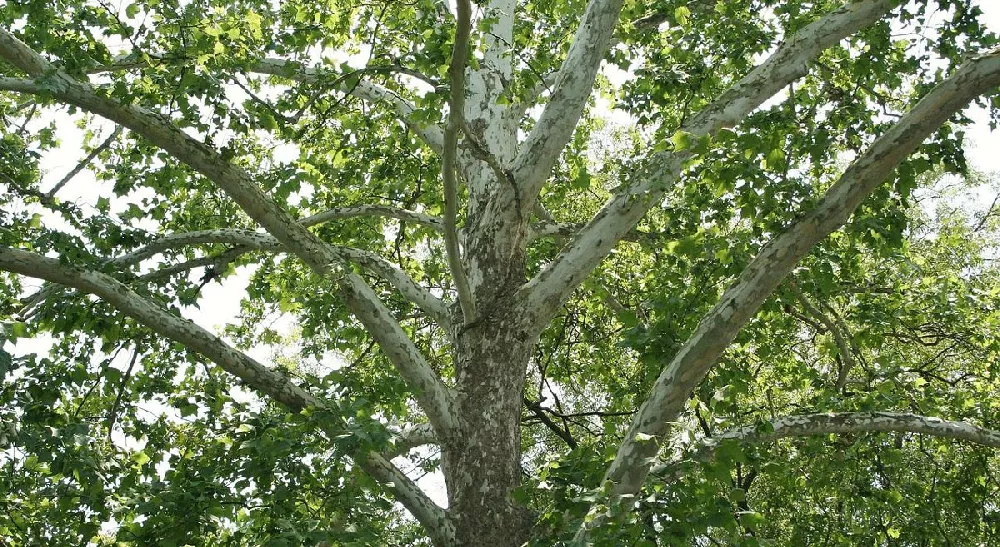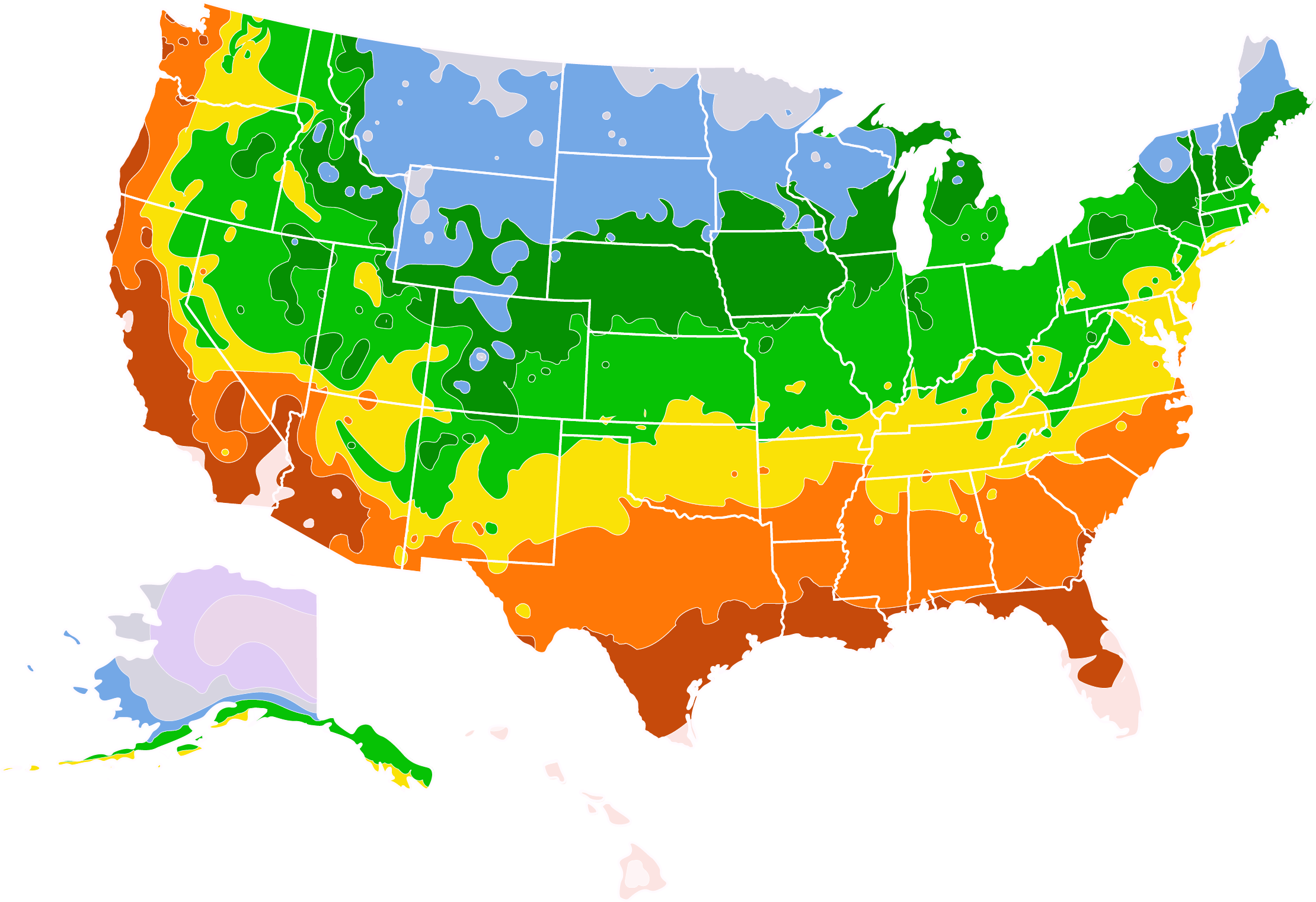- Home >
- Ornamental Trees >
- American Sycamore Tree
American Sycamore Tree for Sale - Buying & Growing Guide
- Ships in 1-2 days
- 1-Year Warranty Eligible
- Pots or accessories are not included unless specified in the product options.
Shipping Details:
Once your order is shipped, you’ll receive an email with a tracking number and estimated delivery date. Most orders ship immediately, but some items are seasonal and may only ship in spring or fall. These products are noted on the website.
If you've ever noticed a tall, majestic tree with maple-like leaves and interesting mottled bark in a park or roadside, chances are you were looking at an American sycamore, Platanus occidentalis. These North American natives grow throughout most of the continental U.S. and are adapted to a range of growing conditions and soil types. For these reasons, they've become a favorite for landscapers, garden designers, and others who need to fill a space with a tree that's eye-catching but easy to care for. As an added benefit, the American sycamore is a fast grower, adding up to 6 feet to its height a year — meaning that you'll be able to enjoy its stately beauty that much quicker. Here are a few more reasons why you might want to grow an American sycamore in your own landscape:
- The American sycamore thrives in hot and cold environments from Florida to Maine.
- It is tolerant of wet sites and isn't bothered by compacted soil.
- The American sycamore is an excellent shade tree that can keep cooling costs down in the summer when planted near a home while still letting in the sun in winter.
Plant Care
Sunlight
American sycamores grow best when they are in full sun, receiving at least six hours of direct light a day.
Watering
Young American sycamores need at least 1 inch of water a week; water whenever the soil is dry.
Fertilizing
Fertilize in early spring with a slow-release, balanced fertilizer, such as a 10-10-10 mixture.
Planting and Care
Planting instructions
Site your American sycamore where it will get six or more hours of direct sunlight a day. Keeping in mind that the tree can grow up to 70 feet, don’t place it under any overhead wires, and allow for space between the tree and any structures, since it can have a spread of as much as 50 feet. Unpot the sapling, and tease out any encircling roots, which can girdle the tree and eventually kill it. Dig a hole that’s as deep as the root ball and twice as wide. Place the tree in the hole and, holding it steady and upright, fill in around it with good quality topsoil. Water thoroughly. Apply a 2- to 3-inch layer of an organic mulch, such as bark chips, around the tree’s root zone to help conserve moisture, but keep it from directly touching the trunk.
Watering and nutrients
For roughly the first three years of your tree’s life, water it regularly, so that it receives about an inch of water a week, either from rain or supplementally. By this time, it should be well established and will need less water, so you can taper back to watering only when conditions are very hot or drought-like. A good way to know if it needs water is to dig a small hole near the root zone and see if the soil 3 inches down is dry — if so, water the tree. A general purpose, balanced fertilizer works well for the American sycamore. Fertilize throughout the growing season as indicated by package directions, usually once a month.
Pollination
The American sycamore has small and insignificant flowers that cluster from stalks that grow from the branches in spring. The trees are monoecious, meaning that a single tree has both male and female reproductive parts in the flowers. The male flowers are red and drop off the tree after the pollen is disbursed by the wind. Female flowers mature into small fuzzy fruits.
Pruning
Most of the pruning you will do on your American sycamore will occur while the tree is young and relatively small. During the first few years, prune off branches that are low on the trunk, as well as any that are rubbing or crossing each other. The tree should develop a single, strong central leader, but if there are two, prune out the weaker one. Do your pruning when the tree is dormant, in winter or early spring.
Pests and diseases
There are several pests and diseases that plague the American sycamore, and it’s good to be able to identify them. Be on the lookout for scale insects, borers, Japanese beetles, and mites. A healthy tree can fight off minor infestations; for major attacks, consult an arborist for the best action. The most serious disease of the sycamore is anthracnose, which occurs most often in wet, cool weather. If your tree starts to drop leaves out of season, this may be the culprit. It can be fatal, but again, your best course of action is to consult a tree expert for treatment.
Achieving maximum results
It’s one thing to place a few zinnias, say, in a front yard garden without giving it a lot of thought. It’s another thing entirely to plan the placement of an American sycamore. These giants of the forest take up considerable room and may live hundreds of years — you will want to pay special attention to where you place your sycamore, avoiding any impediments that might encroach on the tree when it is mature. What that means is that it may not be the right choice if you have a small lot without the room this tree needs. On a larger plot of land, however, the American sycamore can shine. Consider, for example, a stately line of well-spaced sycamores lining a long, curved driveway or along the shoreline of a creek or river. The American sycamore can also play a role in energy savings, if planted near (but not too near) a home. In summer, the tree will provide welcome shade, cooling the home’s inhabitants without the need for supplemental air conditioning. In winter, when it drops its leaves, the sycamore’s canopy will be open to the sun’s rays heating the home — a win-win situation.
FAQs
Are American sycamores messy?
Like any deciduous tree, the American sycamore sheds its leaves every fall, after they turn a lovely golden color. It will also drop seed balls occasionally, although these break apart almost immediately, and as the tree ages, the bark achieves its attractive mottled look by shedding small portions at a time. But the sycamore is no messier than most of the trees that grow in American gardens, and an afternoon with a leaf blower can easily clean up any sheddings or dropped leaves.
Are American sycamores good for wildlife?
There are multiple benefits to wildlife when you have a sycamore or two in your backyard. The seeds are eaten by birds including finches, chickadees, and juncos, as well as by small mammals such as squirrels and beavers. The American sycamore is prone to a hollowing out of the main trunk as it ages, which does not harm the tree but provides excellent shelter for wildlife. Birds that nest in the tree include owls, flycatchers, and wood ducks.
Is the American sycamore tolerant of wet soil?
One of the best uses of the American sycamore is in wet areas, because the tree is not only tolerant of wet soil but able to handle flooding situations and stand in water for weeks without worry. It is frequently used by landscapers, in fact, to restore degraded stream banks and disturbed land.
Compare Similar Products
You can't add more Product Name - Product size to the cart.
OK




